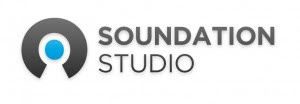 I've quite possibly saved the best for last here, but I'll let you be the judge of that. If you've missed the past 11 days, here they are in a quick list. Be sure to check them out:
I've quite possibly saved the best for last here, but I'll let you be the judge of that. If you've missed the past 11 days, here they are in a quick list. Be sure to check them out:- Day 1: Symbaloo
- Day 2: Livebinders
- Day 3: Wallwisher
- Day 4: Card Funk
- Day 5: Blabberize
- Day 6: Picnik
- Day 7: Cooltext
- Day 8: Soundation Studio
- Day 9: Animoto
- Day 10: Answer Garden & Urtak
- Day 11: Primarypad
- Day 12: Voicethread (here we are)
To get started on Voicethread, they offer a number of easy tutorials and you can also check out Youtube. You begin by uploading images, videos or documents that you have. Add a title, description and some tags to your Voicethread.
 Each picture or video needs to have a title added. You can comment on each picture by selecting the picture and clicking comment. Before you share your Voicethread, be sure to select which Playback and Publishing options you would like. You can then export or embed your Voicethread. Here is a quick one that I've created (feel free to leave comments):
Each picture or video needs to have a title added. You can comment on each picture by selecting the picture and clicking comment. Before you share your Voicethread, be sure to select which Playback and Publishing options you would like. You can then export or embed your Voicethread. Here is a quick one that I've created (feel free to leave comments):Here are some ideas for how to use Voicethread in the Classroom - Voicethread 4 Education Wiki. Alternately, look at the Voicethread below on 100 ways to include Voicethread in the Classroom:
Merry Techmas Everyone!






























